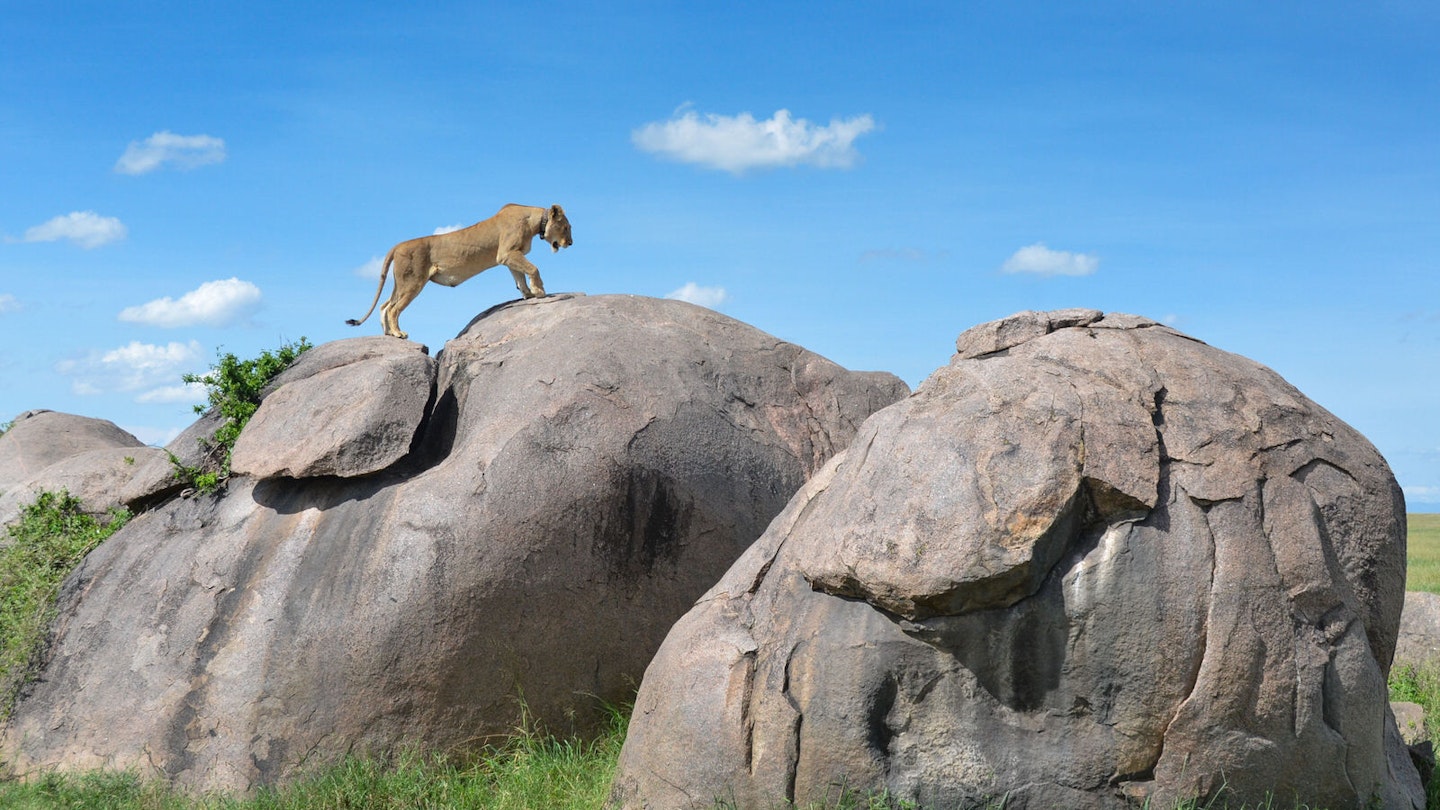Wildlife Adventures Inspired by The Lion King
From Banzai, Simba and Shenzi to Pumbaa, Timon and Zazu, the characters of The Lion King have captivated millions, both young and old, since the original animated feature was released 25 years ago. With the live-action remake out on 19 July, we thought we’d reintroduce you to some of the species featured in this famous film and provide some advice on the best places to see them in the wilds of Africa.
Lions
Simba (named after the Swahili word for lion) and his extended family of Scar, Mufasa, Nala, Sarabi, and Sarafina portray traits often seen in Africa’s biggest cats when in the wild. Loving and loyal, lions can also be fierce, lazy, and occasionally loathsome. Consequently, this fascinating and powerful species is one of the most sought after by safari goers.
The shared ecosystem of Kenya’s Masai Mara and Tanzania’s Serengeti is perhaps the most iconic setting to observe lions living life as they have done for time immemorial. The vast rolling savannahs punctuated with flat-topped acacia trees create the quintessential safari environment in East Africa.
Other incredible locations to observe lions include Chobe National Park and the Okavango Delta in Botswana, Kruger National Park in South Africa, and South Luangwa National Park in Zambia. The latter is famous for its guided walking safaris that put you on level footing with lions in their natural habitat.
Warthogs
Who can forget Pumbaa, with his lofty tail and large curved tusks? Once considered one of the ‘Ugly Five’ in the safari world, the warthog’s reputation has been forever transformed by this humorous character in The Lion King. His name aptly translates to ‘silly or foolish’ in Swahili.
Their tails shooting skyward as they scamper off when spooked never fails to garner smiles from those on safari. It’s believed this behavior facilitates them to follow each other when dashing into deep grass for cover. Moreover, many guides affectionately call their tails ‘bush antennas’. The warthog’s unique eating stance, characterized by long legs and short necks, allows them to kneel down while grazing due to evolved pads on their front knees.
Warthogs are widely distributed across Southern, West, and East Africa. Eastern South Africa, northern Namibia, northern Botswana, Zimbabwe, Zambia, Mozambique, Tanzania, Uganda, and southern Kenya are all hotspots for viewing these quirky creatures.
Meerkats
Where there is Pumbaa, there is, of course, Timon. This meerkat character is one of the few in The Lion King whose name does not have a meaning in Swahili; however, it is derived from a Greek word that means ‘to honour or respect’.
In the wild, meerkats live in large family groups of up to 50 members and reside within complex networks of underground tunnels in the desert regions of Botswana, Namibia, and South Africa. Omnivorous, they eat everything from plants, insects, and eggs to snakes, lizards, and scorpions. Remarkably, meerkats have an immunity to scorpions’ poison, allowing them to dine on the latter. While some family members dig and forage, others act as sentries to watch for predators.
One of the most rewarding experiences is visiting the groups of habituated meerkats within Ntwetwe Pan in the Makgadikgadi and Nxai Pan region of Botswana. Although still wild, these meerkats have no fear of humans, allowing for astonishing encounters as sentries may clamber right up your leg to survey possible threats.
Spotted Hyenas
Did you know Scar’s three spotted hyena henchmen, Shenzi, Banzai, and Ed, were originally supposed to be African wild dogs? It’s thought this was changed due to the fierce rivalry between lions and spotted hyenas on the East African plains. The spotted hyena is a fascinating creature, with females outweighing males and playing a more dominant role in their large clans.
Often erroneously labeled as mere scavengers, spotted hyenas are incredibly skilled hunters, known to take down wildebeest, zebra, antelope, and even juvenile hippos. Notably, lions sometimes scavenge from hyena kills. With powerful jaws, these creatures can even consume the bones of their prey, resulting in their droppings often appearing white.
There are more than 7,000 spotted hyenas in Serengeti National Park alone, making it and the adjacent Masai Mara prime territories to see them. As spotted hyenas are primarily nocturnal, you’ll likely need to wake up early to catch a glimpse. The floodlit waterholes at Namibia’s Etosha National Park are fantastic places to observe the captivating dynamics of hyena clans at work, even at night.
Mandrills
The character Rafiki, whose name means ‘friend’ in Swahili, is a mandrill. The largest of all monkeys, the mandrill resembles an art piece with its brilliantly colored face. Reclusive and shy, this species is primarily located in the equatorial rainforests of central Africa. Consequently, Lopé National Park in Gabon is your best bet for spotting one in the wild.
Red-billed Hornbills
Last but not least is Zazu, the red-billed hornbill. Known for its swooping flight pattern and long curved bill, this bird engages in a unique nesting ritual. The female lays up to half a dozen eggs in a tree hole before sealing herself inside for the duration of incubation. Only a small opening remains for the male to transfer food to the mother.
There are up to five different species of red-billed hornbill that inhabit most of the woodlands and savannahs of sub-Saharan Africa. Therefore, you’d be quite fortunate to see one during your safari adventures across the continent.





